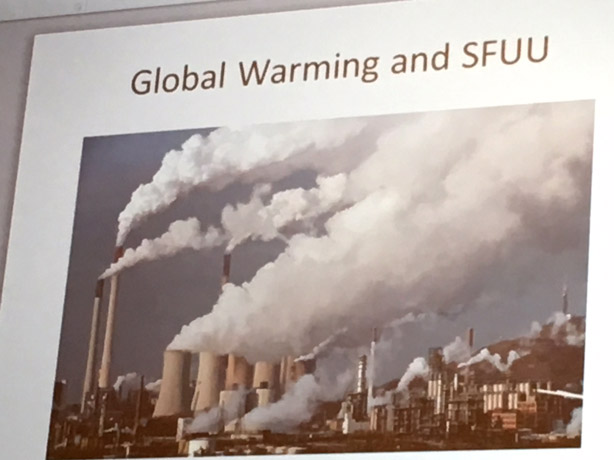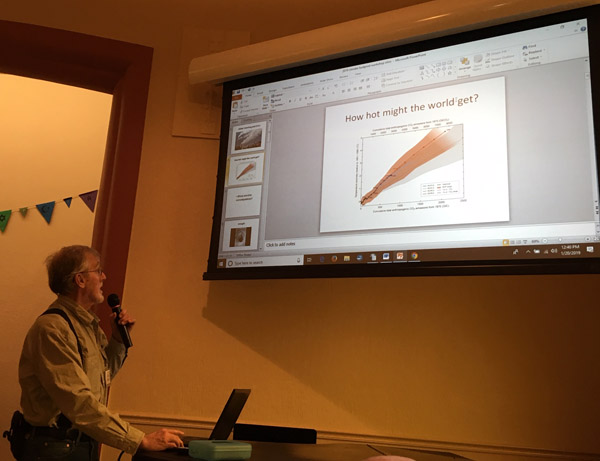2019 Congregational Climate Footprint
We kicked off our Green Sanctuary program with a forum on January 20, 2019 dedicated to providing a tool to help each of us work toward reducing our carbon footprint. The calculation opened our eyes to the aspects of our lifestyle that burn the most carbon.
Purpose of the Climate Footprint
One of many climate change-related posters carried at the Jan 2017 Women’s march in Washington, D.C. Photo by Barb Munn.
We seek to lead an active local response to the problem of human caused climate change. Since climate change is primarily caused by our collective individual greenhouse gas emissions, the United Nation’s climate program believes that the world needs to cut emissions in half by 2030, and to a net of zero by 2050. But to make these reductions, we need to understand what our individual emissions currently are, and how they compare with the target UN for 2030. It also means that we need tools to track our progress as we work to reduce them. All of this requires that we assess our current emissions as a baseline, and then regularly reassess them in order to track our progress.
Background
In early 2017, the social justice committee asked church members to inventory their greenhouse gas. We are now asking members to inventory their emissions again. For those who participated in the 2017 inventory, this will be the chance to see how much they have reduced emissions in the past year and a half. For newcomers to the process, this will provide an emissions baseline they can use to track progress in years to come. Click on the button below for the UC Berkeley CoolClimate footprint calculator.
How it Works
Using the UC Berkeley CoolClimate footprint calculator. We held a congregational workshop on January 20, 2019 to teach members how to use the calculator, and help them work through the survey that is a part of the project.
Lead for this project: Allen Edwards
Some pertinent news articles:
Slate article: Reducing Your Carbon Footprint Still Matters, In fact, getting politicians and industry to address climate change may start at home
BBC News: Climate Change: Where we are in 7 charts and what you can do to help
BBC Interactive: Climate Crisis: How Can I Help?
The Guardian: How to reduce your carbon footprint





